In the collective and feminine rise against the Pahlavi machine, a regime that held no merit for their traditional values, many women gave more than the articulation of their voice: they gave their blood.
By Anahita Hamzei*
Much can be said about Iran’s legendary revolution of 79’ which established the nation of morals -- we know it today as the Islamic Republic of Iran. Strong, intelligent, courageous men of the revolution are often recognized all over the globe: their brave actions opened innovative portals to freedom for the Iranian majority. However, what of the women? What roles did the women of Iran play, if any, to ignite a revolution and succor in the defeat of the oppressor? There is no doubt that Iranian women played a strong role, collectively, in a society that was stretched on the brink of a revolution. This article will familiarize you with brave Iranian women; their active roles, struggles, and in some cases the fate of women who brought the revolution of 79’ to victory. Women endured and overcame for the love of humanity, in the pre and post revolutionary era of Iran; thus, women played a crucial role in shaping the Islamic Republic of Iran.
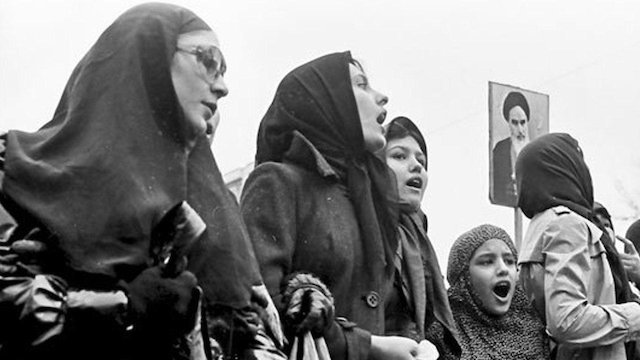
Planting the Seeds of a Revolution
The vigor and dedication of the Iranian women should come as no surprise -- if you are familiar with Iranian culture. Women of Iran are predominantly Muslim. They believe one of the best attributes of their honored, historical, religious martyr, Hazrat Zeinab(ra), who many Iranian women emulate, was that of judging the government (during her time) of wrong doing and rising against them.[1] It was, in fact, religious figures like Hazrat Zeinab (ra) and spiritual scholars that the women relied upon, in those times especially, for strength, motivation, and assurance of their freedom. They planted the seeds of thought within the minds of Iranian men and women, young and old, which led them to struggle against oppression. The Shah exhibited oppressive behavior, reminiscent of everything that women of Islam have fought against. He showed immense disdain for spiritual women, particularly, when his regime infringed laws upon women forcing them to pull away from their respected traditions.[3] When immense objection towards his horrific treatment began to emerge, so did a glimmer of hope, one that aided and nurtured the seeds of rebellion. Ayatollah Khomeini, then Leader of the movement, countered the Shah’s, Mohammad Reza’s, misogynist laws and beliefs: he showed duel support for women, in matters of equality and respect towards religious traditions; rightly so, his movement attracted women from both sides of the spectrum.[6, 13] Imam Khomeini (ra) sent a message, while exiled in France, stating, "Any nation that has women like the Iranian women will surely be victorious”.[4] He asserted that his comment served as encouragement: he asked Iranian women to be proud of self and to have no fear of martyrdom.[4] Hereafter, like their religious role models, many Iranian women took it upon themselves the struggle or jihad, along with its many responsibilities and consequences, sometimes death, in order to bring the Pahlavi dynasty down. In the midst of this collective, almost feminist jihad – for straightforward rights over their bodies, social progress, and religion – many women were maimed, tortured, raped, humiliated and killed by the brutal Pahlavi regime; ultimately, they blossomed into martyrdom. [16]
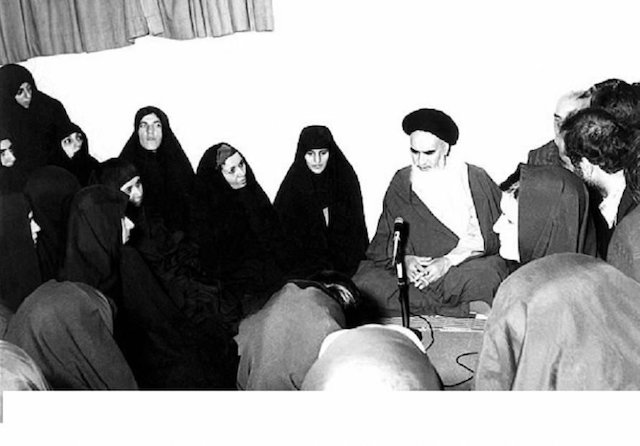
The Women Bringing Revolutionary Ideals to Life
The movement and revolution, alike, consisted of a conglomerate of women from all social sectors: liberal and secular, literate and illiterate, metropolitan and rural: this diversity, by far was one of the most phenomenal and contributing aspects of women in the movement.[4, 6] In the collective and feminine rise against the Pahlavi machine, a regime that held no merit for their traditional values, many women gave more than the articulation of their voice: they gave their blood. They gave their lives in a passionate effort to pave the way for a new Iranian government, the Islamic Republic of Iran. In the late 1960’s, Bakhtar Biglari was one of the earliest female martyrs that triggered the movement: she was murdered, about ten years before major events of the revolution unfolded. Bakhtar is revered as the Martyr of the Mountains.[5] At only thirty years old Bakhtar’s entire family and fellow villagers were massacred, for their involvement in a well organized attack on one of the shah’s military post.[5] After the attack Biglari, her family, and some villagers fled, ascending into the mountains. Later, she was deceived by agents of the shah, in an operation to pull Biglari and her people out of hiding. It is reported that nearly three hundred people were martyred in the revengeful and bloody operation against Biglari and her colony. [5] Tales began to spread, far and wide, across Iran of Biglari’s heroic movement against the shah: other brave feminstas began to follow suit. Among some of the other brave women, who retaliated against the Shah’s regime, was Marzieh Hadideche Dabbaqh.[5] In 1972 Marzieh and her fourteen year old daughter Rezvaneh, were both captured and severely tortured by the Savaak (the Shah’s CIA of that time).[16] Her daughter was tortured and humiliated in front of her; nonetheless, Marzieh was fortunate enough to escape with her young daughter and relay her story to the public.[5, 16] Shortly after her escape she went back “full swing” to join the movement, becoming one of the right hand women, so to speak, of Ayatollah Khomeini.[11]
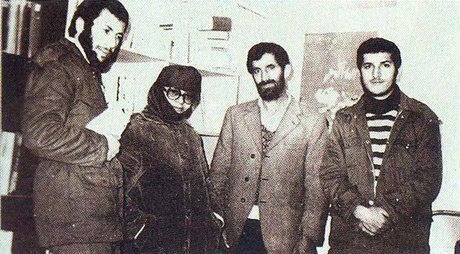
Her activities included spreading the ideologies of the movement among other Iranian men and women. The deaths and sacrifices of these women emboldened an already fiery movement of men, but also their unrelenting devotion paved the way for more women to rise up and join the movement. The movement reached its apex over time. Women came to their feet, as never before, joining protest and demonstrations, expressing their disproval of the Shah, assisting one another “shoulder to shoulder” as the Supreme Leader often described their devotion in his speeches. [8] “Our sisters, who were previously occupied with other matters, today shoulder-to-shoulder with the brothers, indeed leading the brothers, concern themselves with the destiny of their people and their country. They make plans, form views and criticize. This is a change that God the Blessed and Exalted, who is the changer of hearts, has brought about.”[8] As the movement progressed, into a full blown revolution, more women took vocal positions in denouncing the shah; thus, more women were martyred. On September 8, 1978, the shah’s tanks and helicopters opened fire on thousands of protesters in Tehran, killing hundreds of innocent men, women and children. [15] Iranians refer to this massacre led by the Shah’s government as Black Friday.[7, 14] The first woman martyred for the revolution was Mahboubeh Danesh Ashteyani, she was only seventeen years old when the shah’s military gunned her down, on Black Friday.[5] Her mural is positioned at Heftda Shahrevar (seventeen square); her youthful face prevails as a reminder of the braveness and courage that one woman can embody, during some of the most testing times. Black Friday was an immense phase of climax for the revolution, one that would mark the beginning of the end for the Shah. [7,14] After the devastating events of Black Friday, the number of martyred females mounted, like Bonu Nerzhe, Tayibeh Zamane, to name a few.[5]

Once and for Allah
The actions of the shah became more brazen; they tore at the hearts of Iranians: they tore at the hearts of the women. Times were intense. Women from all walks of life, rich and poor, liberal and secular, amplified their revolutionary roles and activities.[6] Support for the Islamic Revolution among women increased, as the shah’s brutality increased. Women became ever more instrumental in the days leading up to the success of the Islamic Revolution. However dreadful the storm was, it was the women who bore the brunt – as Ayatollah Khamenei often indicated, it was the women who carried the heaviest burdens in those times.[1]
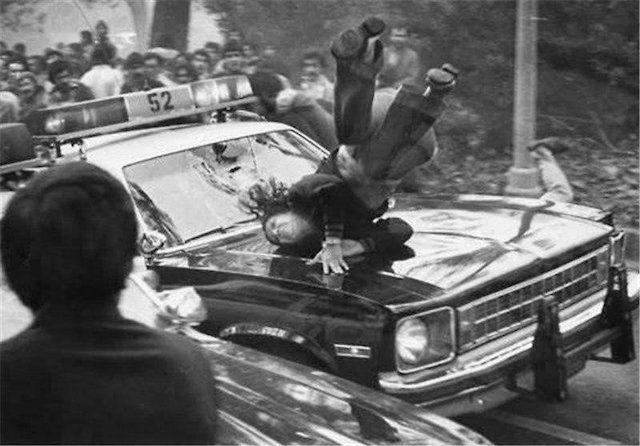
Some of the responsibilities women took upon themselves, during the revolution, were as follows: educating others on the religious ideologies, which facilitated the revolutionary process; others shared pamphlets written by great scholars like Ali Shariati, Ayatollah Khomeini, a young Ayatollah Khamenei, and other intellectuals who contributed; women also took to writing and expressing themselves, by way of their own female-centric pamphlet and magazine publications; asides from taking part in the demonstrations, they also spread word on events that were to take place against the shah. [6, 16] As further matter, a religious enlightenment paralleled with the struggle for women’s rights led many women to adopt Islamic values; additionally, to show their disdain for the shah and support of the revolutionaries. They took to chador, as a symbol of their support – for and with the revolutionaries. Ayatollah Khomeini’s own wife refused to remove her chador when demanded to. [12] She is revered as the Mother of the Revolution, for her unconditional and moral support of her husband, the late Imam Khomeini (ra). Although, the unwavering support of women for their families was, without a doubt, a great effort to succor the revolution, women helped in every way possible.[16] In those troublesome times, it was the women who nurtured the Islamic Revolution of Iran; men of the Revolution honored and respected them. Nurturing, middle-class women aided the sick and the poor among the villages, which received no government support, withstanding the brunt of the Shah’s negligence and brutality – in an effort to solidify the Revolution of Values. [4, 10] These fearless women were often praised for their devotion and hard work, from dusk till dawn, before and after the revolution. [10] “The actions of those sisters who took part in the movement were more valuable than those of the men; they came out (into the streets) in their veils of modesty and shouting in unison with the men brought about victory. Now, with the purest of intentions, what they had accumulated during their lives they donated to the needy. This is worth much, were the affluent to donate millions it would not match this in value.”[10]
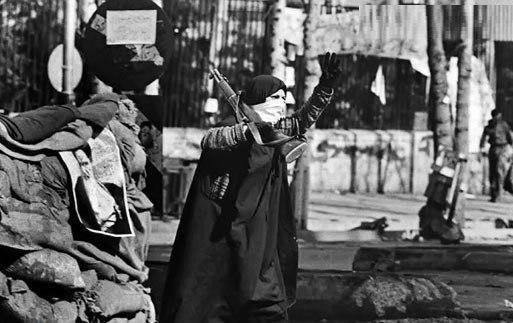
Women were defiant and at the forefront of the Islamic Revolution in Iran. No act too small, by the women, would go unnoticed in those times. They found a voice: they found hope; and they discovered their own worth with a degree of freedom; moreover, they went with it, gracefully in those times. “In a short period of time, a people whose conduct was to haggle with one another in all transactions underwent a transformation and they began to act benevolently towards each other. One of the gentlemen said that during the demonstrations he saw a woman holding a bowl of coins in her hand. At first he presumed she was a poor beggar, but as he got closer to her he heard her saying that she had brought coins along because the demonstrators may need to make telephone calls, as everywhere was closed that day, they may have difficulty finding change. This was a small, but great act; it showed that a transformation had taken place, the magnitude of which was great indeed.” [8] Thanks to the unwavering devotion of women, during the pre and post-revolutionary era, the impious Shah fled Iran. [13] On February 1, Ayatollah Khomeini returned from his exile, greeted by millions of his supporters with millions of female faces among the mass. [15] “This is a change that came about in everyone and led to our respected brothers and sisters feeling a sense of responsibility. This in turn brought you all out into the streets and with your cries you drove your enemy out. This was your direct involvement in politics.”[1] With the help and bravery of many notable Iranian women, the Shah and Imperial rule over Iran had been beaten, once and for all.
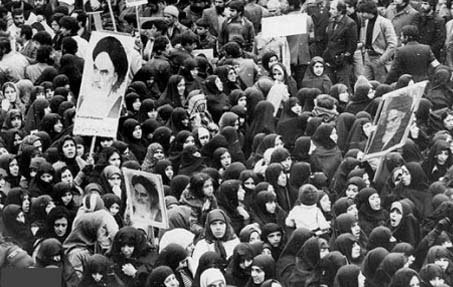
The End with a New Beginning
By the time Iranian revolutionaries gained success, it was reported that over a hundred thousand women became empowered through their participation.[12] Women like Marzieh Hadideche Dabbagh, served as commanders during the Iran/Iraq war; furthermore, she held political positions in parliament, something that could’ve never been accomplished, if not for women holding up the fort during some of Iran’s most trying times.[11] Women created new opportunities for other women in Iran, due to their revolutionary roles. Just as women nurture and guard their children vigilantly, yet lovingly, women of Iran fought for and loved their people, as they would their own children; moreover, they succeeded in giving birth to a new nation, one with a new perspective towards the rights and roles of women in Iranian society. Presently, many nations are withstanding the same moral decline as the Islamic Republic once did under the corrupt reign of the Shah; women are fighting for the same level of respect – in places like USA, England, and Nigeria – as Iranian women did in pre-revolutionary times. Perhaps these oppressed women can learn from the courageous women who gave rise to the Islamic Republic of Iran.
Works cited and Resource list:
1. Khomeini, Syed Ruhallah Musavi, translated by Shaw and Arezoo. The Position of Women from the Viewpoint of Ayatollah Khomeini. The Institute for Compilation and Publication of Imam Khomeini’s Works.2001
2. Saffarzadeh, Tahere. Translated Qur'an in Persian and English (Bilingual). Iran. 2001. (Qur’an 34:46 Surah Saba)
3. Reese, Lyn. “The Age-Old Modesty of the Veil.” In Women in the Muslim World: Personalities and Perspectives from the Past Berkeley, CA: Women in World History, 1998 (pp. 71–72).
4. Girgis, Monique. “Women in pre-revolutionary, revolutionary, and post-revolutionary Iran Chamber Society” Iranian Chamber Society. 1996.
5. Mohammadian,Safeyeh. شهادت، شهید زن، شهدای زن انقلاب (Women Martyrs of the Revolution) http://zananebehsht.persianblog.ir
6. Linn Abbey, When Motherhood Meets Social Protest: Fatima through the Lens of Ayatollah Khomeini and Ali Shariati. Brown University.2015
7. Bhagi, Emad Al Deen. “A Question of Numbers” http://www.emadbaghi.com/en/archives/000592.php
8. Khomeini, Syed Ruhallah Musavi. The Position of Women from the Viewpoint of Ayatollah Khomeini; The https://www.al-islam.org/position-women-viewpoint-imam-khomeini-ra/great-women-world#16-may-1979
9. Muslim Journeys | Item #96: Veiling and the State in Iran, 1930s to 1979", July 25, 2016 http://bridgingcultures.neh.gov/muslimjourneys/items/show/96.
10. Status of Women in Imam Khomeini’s view. http://www.aimislam.com/status-of-women-in-imam-khomeinis-view/
11. Iran Data Portal. “The Association of the Women of the Islamic republic” http://irandataportal.syr.edu/the-association-of-the-women-of-the-islamic-republic
12. Hill, Richard. “Women and the Revolution” https://msu.edu/user/hillrr/161lec27.htm
13. History. “This Day in History 79: Ayatollah Khomeini Returns to Iran”. History, USA. http://www.history.com/this-day-in-history/ayatollah-khomeini-returns-to-iran
14. Rauh, Elizabeth. “The Graphics of Revolution and War: Iranian Poster Art”. Library @ University of Chicago, USA Division of Special Collections Resource Center Online. https://www.lib.uchicago.edu/e/webexhibits/iranianposters/
15. Klevemen, Lutz. The New Great Game: Blood and Oil in Central Asia. Grove Press, NY.2003
16. Raihaneh “Iranian Women Central to the Revolution: Periphery in History, III”. International Network of Muslim Scholarly Women. 2013. http://raihaneh.com/news/2599/Iranian-women-central-to-the-revolution,-periphery-in-history-%E2%80%93-part-three-3-
*Anahita Hamzei is a two time graduate from the Texas A&M University System. She has received B.A.s in the human sciences and earned a Master of Science degree in Sociology. Mrs. Hamzei is an award winning speaker and researcher with published works in various fields of human and life sciences. She has traveled and lived in the Islamic Republic of Iran since 2013. She now journals and writes about her experiences, via news sites and social media, in an effort to debunk stereotypes and misconceptions spread by western propaganda.
The views, opinions and positions expressed on Op-Ed are those of the author(s) and do not necessarily reflect the views, opinions or positions of Khamenei.ir .










